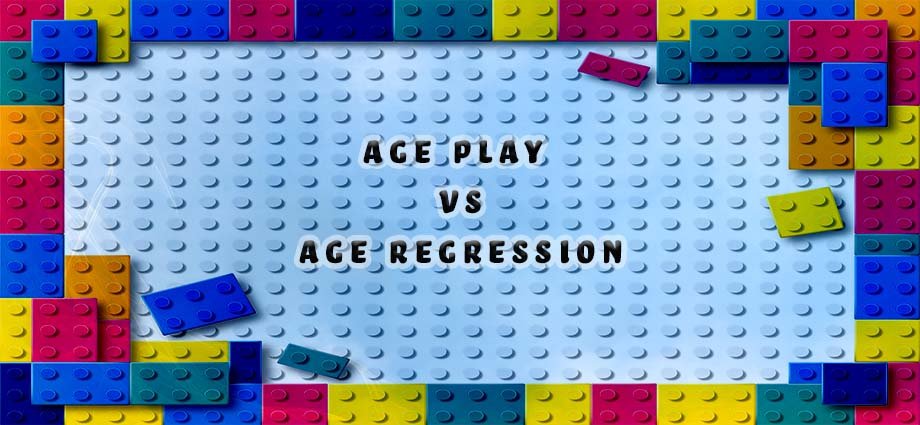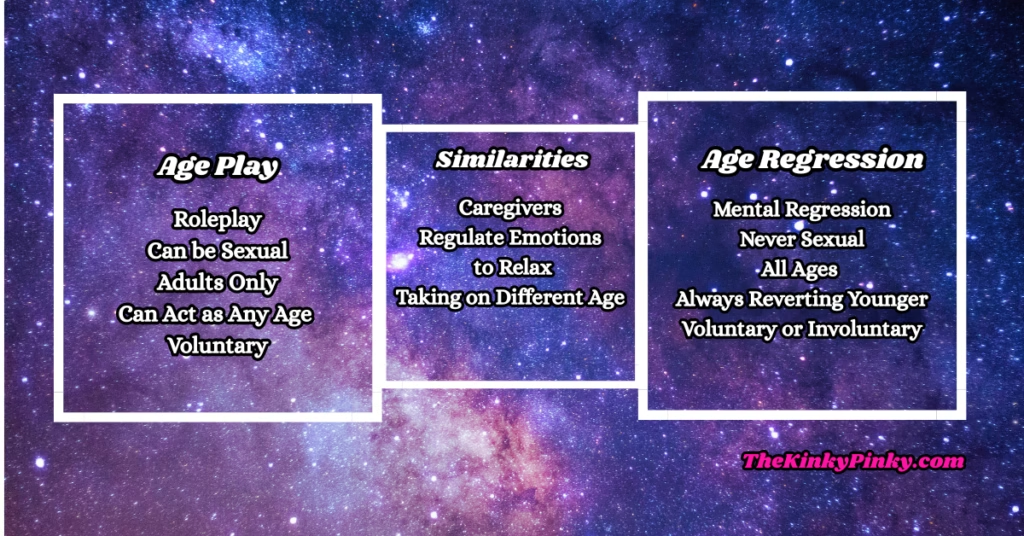
It’s easy to confuse age play & age regression. At a glance, they look alike and have similar terms. But don’t let that fool you; these words are not synonyms for each other.
To put it simply; age play is for adults and a kink, while age regression is for everyone and not a kink. Now, let’s get into the nuances of them.
What is Age Play?
Age play is a form of sexual or non-sexual role play in which one or more consenting adults pretend to be an age different from their biological one.
This type of play is a part of the kink community, therefore it is for adults.
A prime example of age play in the kink community is the caregiver little dynamic (CGL).
In this dynamic, one partner acts the role of a caregiver, while the other acts the role of a “little”. The “little” pretends to be younger than they are.
This type of age play dynamic is the one commonly discussed. However, age play includes more than people pretending to be younger.
Age players may also act as older people too.
For instance, I act like an older cougar woman to turn my equal in age partner on.
Those who engage in age play do so because they find the power exchange to be arousing, comforting or just plain old fun!
Now, What is Age Regression?
Age regression (agere) is when an individual, of any age, psychologically returns to a mental state that is younger than they are, either voluntarily or involuntarily.[1]
When voluntary, the regressor usually uses it to relieve stress, regulate emotions or deal with past traumas by returning to a safer state of mind. This is known as age regression therapy.[2]
When agere is involuntary, the mental headspace that the regressor experiences can vary from fun to traumatic. These episodes can be a sign of a mental health condition such as schizophrenia, post-traumatic stress disorder (PTSD), or borderline personality disorder[3], along with a list of others.
And, How are they Different?

The biggest difference between age play and age regression is that age Regression is not a kink.
Age play is for adults because of its connections with the kink community. It can be sexual or non-sexual because the person/s involved are playing an age younger than themselves.
Age play is completely voluntary and is not restricted to acting younger.
In contrast, age regression is for all ages and is never sexual,[3] even if it’s between adults. This is because the individual involved is mentally regressing, usually to the age of a minor.
In other words, they can not give consent.
Age regression can be voluntary or involuntary.
When it’s involuntary, it can become a hindrance to the regressor’s way of living, especially when they need to do “adult” things.
Citations
- Sisgold, Steve. “Conscious and Unconscious Regression.” Psychology Today, 2014, www.psychologytoday.com/us/blog/life-in-body/201409/conscious-and-unconscious-regression.
- WebMD Editorial Contributors. “What Is Age Regression Therapy?” WebMD, 17 July 2023, www.webmd.com/mental-health/what-is-age-regression-therapy.
- Holland , Kimberly . “Age Regression: What It Is, Why It Happens & When It May Be Helpful.” Healthline, 30 Aug. 2019, www.healthline.com/health/mental-health/age-regression#types.



olá, esse texto me ajudou a entender algo que tenho confundido a um tempo, achei essa a melhor explicação sobre o assunto das que encontrei, muito obrigado!
Thank you for the kind words! I’m happy my article could be informative to you!